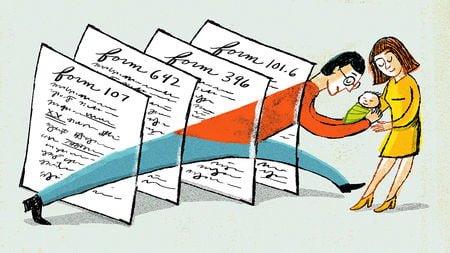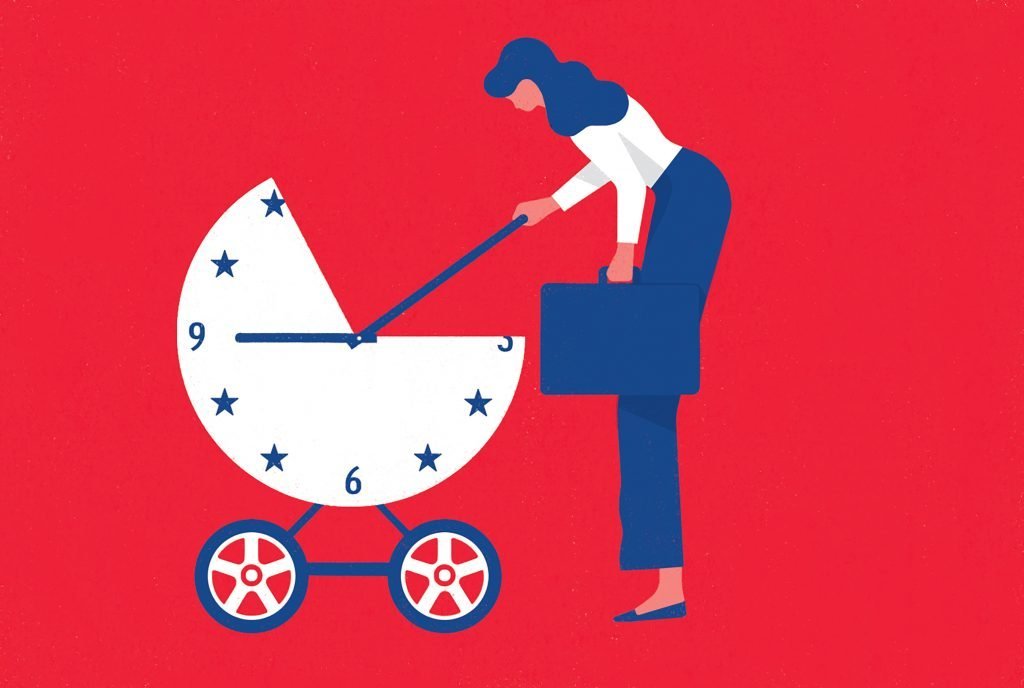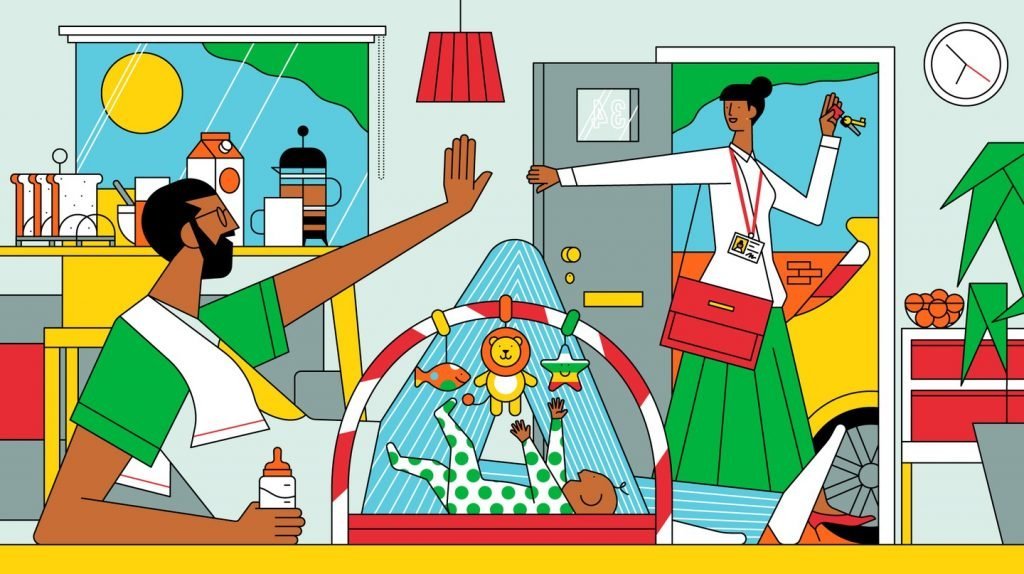Parental leave is a concept which aims to make work places more family friendly. When there is the birth of a baby in the family, these policies allow for the possibility of taking a leave of absence – by the mother, father or in some cases both – to take care of the child. This leave could be either paid or unpaid. What it attempts to ensure is that the caretaker can balance both a family and a job. However, parental leaves often only translate into maternity leaves, very rarely are they ever for the father. Paternity leaves as a policy isn’t a common phenomenon, and the very lack of it points towards a gendered gap in our labour laws. It is quite clear that there is no proper legislation for paternity benefits. The only provision that exists in India gives 15 days leave for the father, as opposed to a maximum of 26 weeks or 182 days for the mother. That is less than 8 percent.

Indian Parental Leave Policies
The Maternity Benefit (Amendment) Act, 2017 allows for pregnant women to take leave for a total of 26 weeks out of which up to 8 weeks can be claimed before delivery. The woman is also supposed to get paid a benefit at the rate of her daily wage for three months before she goes on maternity leave. This law applies to all women working in establishments with 10 or more workers. It also provides for adoptive mothers, who are entitled to 12 weeks of leave. For women having undergone a tubectomy operation – meant to stop future pregnancies – the Act provides for a 2 week paid leave.
Also read: How Progressive Is Zomato’s Parental Leave Policy?
Under Central Civil Services (Leave) Rule 551 (A), there are certain provisions for paternity leave – a central government employee can avail a paid leave for 15 days. In 2017, The Paternity Benefit Bill was proposed by a Maharashtra MP, Rajeev Satav. It called for a paid paternity leave for 15 days extendable to 3 months.
certain studies have revealed that men might not be that comfortable availing paternity leaves. The culture of toxic masculinity that prevails in our society results in hesitancy and some amount of derision in doing what they think is ‘women’s work’. There is a need to maintain the antiquated status quo, the ‘breadwinner’ and the ‘homemaker’.
Maternal Care Vs Paternal Care
It is quite clear that there is no proper legislation for paternity benefits. The only provision that exists in India gives 15 days leave for the father, as opposed to a maximum of 26 weeks or 182 days for the mother. That is less than 8 percent. The number of days given to the mother can be partly justified by the physical healing the body needs after childbirth. However, the vast gap that exists between these two policies exposes the possible mindset that went into making them. The father need not stay at home as much as the mother must, as she is expected to carry the brunt of the child-rearing responsibilities. In this manner, legal policies are reinforcing societal biases.

Moreover, certain studies have revealed that men might not be that comfortable availing paternity leaves. The culture of toxic masculinity that prevails in our society results in hesitancy and some amount of derision in doing what they think is ‘women’s work’. There is a need to maintain the antiquated status quo, the ‘breadwinner’ and the ‘homemaker’.
Need for a More Inclusive Policy
A more balanced and equally distributed model of parenting – as it should be – leads to better psychological health for everyone involved. A research study conducted in Spain also found that after the introduction of two weeks of paid paternity leave, fertility rates fell, suggesting that when fathers are more engaged in raising children, they may become more aware of the challenges associated with it. This in turn may lead to a relationship which is compassionate and understanding – one of the first steps towards achieving gender equality, after all, is acquiring an awareness of each other’s problems. It has also been proven that children whose fathers are more involved in their lives have better developmental outcomes.
Making maternity leaves as the only parental leave option in a company doesn’t really bridge the gap between the domestic and the public; rather it demarcates the two even more strongly. The indirect implications are that women are supposed to not only juggle both work and home life, but also return – alone – to home life the second their ‘nurturing’ role is called to the fore.
Women of childbearing age are discriminated against in the workplace as they are seen to be a liability. Often companies avoid hiring them. Some women have also complained about difficulty in adjustment after returning from leave. If paternity leaves are normalised and men actively start taking them up, this attitude might change towards a more egalitarian view. For instance, to promote a more equitable system of parenting, the ‘Father’s Quota’ in Norway, Sweden and Iceland reserves a part of the parental leave for fathers. If the father doesn’t avail it, that part cannot be transferred to the mother.
Women of childbearing age are discriminated against in the workplace as they are seen to be a liability. Often companies avoid hiring them. Some women have also complained about difficulty in adjustment after returning from leave. If paternity leaves are normalised and men actively start taking them up, this attitude might change towards a more egalitarian view.
The absence of a paternity leave provision also excludes homosexual parents and single fathers. For the organisation, equitable leave policies will attract employees more. These leaves ensure a better work life balance, which will in turn guarantee higher levels of satisfaction and contentment within employees leading to greater productivity and higher retention rates.

Conclusion
While maternity leaves are meant to facilitate working mothers’ careers, often they do the exact opposite. Making maternity leaves as the only parental leave option in a company doesn’t really bridge the gap between the domestic and the public, rather it demarcates the two even more strongly. The indirect implications are that women are supposed to not only juggle both work and home life, but also return – alone – to home life the second their ‘nurturing’ role is called to the fore. No matter how high up the corporate ladder she might go, only and only she must return to take care of her child.
Also read: Ms Maneka Gandhi: Raising A Child is Not A Mother’s Job Alone
Legislations and policies are important tools in directing social change. In order to fight entrenched prejudices we must recognise the gaps in the system and bridge them with feminist, egalitarian policies.
Featured Image Source: Parenting
About the author(s)
Anindita is an English Literature student who enjoys reading feminist literature and eating copious amounts of Chinese food, all along unlearning tradition and relearning rebellion.




